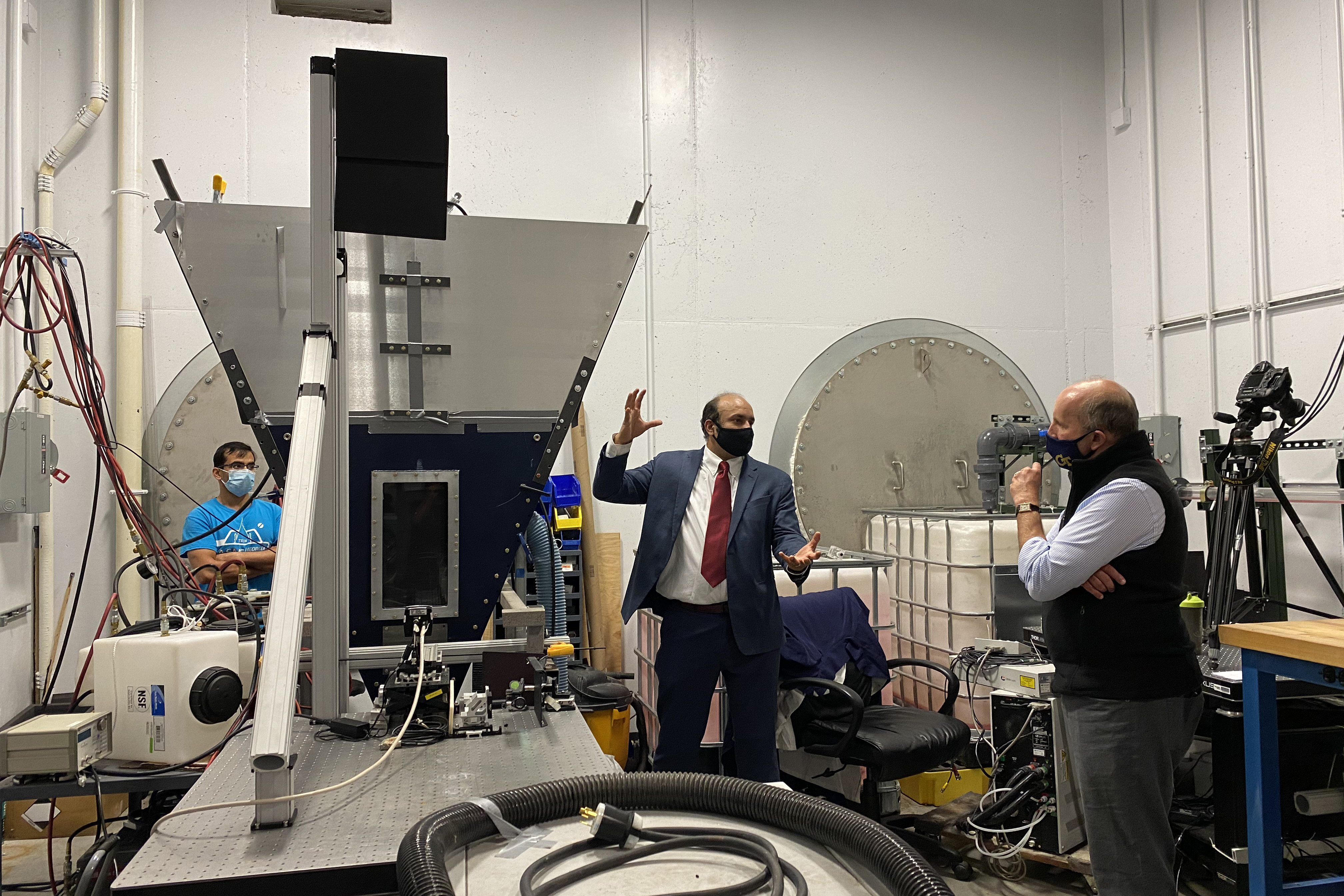Welcome!
Welcome to the Shock Tube & Advanced Mixing Laboratory! STAM Lab explores complex flow and mixing environments to advance energy technologies and our understanding of the physics of our world.

Our experiments address fundamental fluid dynamics phenomena which are ubiquitous in nature, and often present in emerging energy technologies. Some notable applications of our research are: designing next-gen power production cycles, understanding the behavior of plumes in volcanic eruptions, design of more efficient fuel pellets for inertial confinement fusion, fragmentation of gallstones or kidney stones by shock waves, and development of energy-efficient scramjet engines.

We explore the development of fluid instabilities that arise from various conditions, and the impact these have on the subsequent transition to turbulence. Gravitaty-, shock wave-, and shear-induced instabilities contribute to mixing between fluids, which is desired only in some situations. Controlling this mixing process to enhance mixing of air and fuel in scramjet engines can lead to more complete and cleaner burning of fuel, as well as a reduction in fuel use. Conversely, attempts at inertial confinement fusion have been thwarted due to instability development and mixing of fuel capsuls; purposefully controlled instabilities could lead to more efficient consuption of ICF fuels. the mixing process in such complex flows presents a set of truly fundamental problems in fluid mechanics that still remain to be solved.
Our lab is also focused on investigating at both the fundamental and applied levels of the thermal-hydraulic (heat transfer and fluid dynamics) behavior of supercritical fluids. Supercritical fluids have been used in many applications and their use and interest is increasing in many areas; these fluids have been used to substantially increase power density and efficiency of power generation systems, are integral in CO2 sequestration, s-methane for a coolant and fuel for supersonic transport, various s-hydrocarbons for fuels, coolants and chemistry control in combustion systems, s-helium for superconductor cooling applications; and s-CO2 for refrigeration, high efficiency Brayton cycles, geothermal energy transport, chemical extraction and refining. The s-CO2 based Brayton cycle has been found to superior to other advanced high temperature cycles both from the standpoint of increased thermal efficiency as well as reduced size and cost of the required turbo-machinery components. The cycle is of interest in concentrated Solar Electrical Generation Systems (SEGS), and for any high-temperature heat sources including the very High Temperature Reactor, the Sodium Fast Reactor and the Fluoride High temperature reactor.
Dr. Ranjan (CV) is the director of STAM Lab, whose advisory board comprises of distinguished researchers from National Laboratories including Los Alamos and Lawrence Livermore National Lab.
